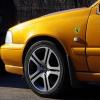
Volvo - Cele mai avansate teste de siguranta
Started by
Midnight Caller,
1 post in this topic
Create an account or sign in to comment
You need to be a member in order to leave a comment

Started by
Midnight Caller,
You need to be a member in order to leave a comment